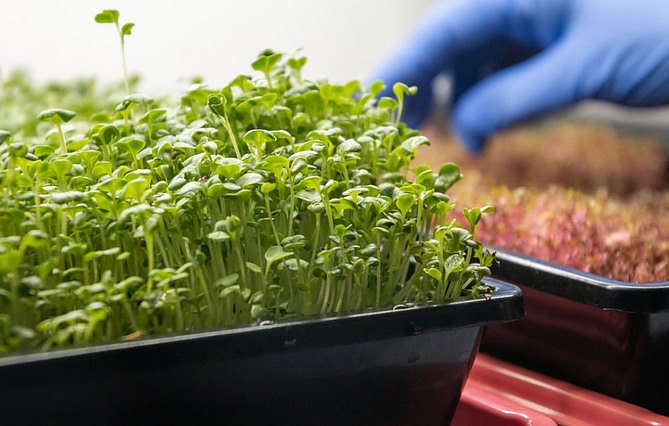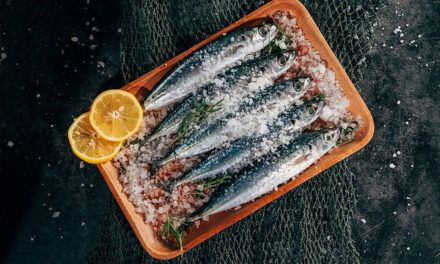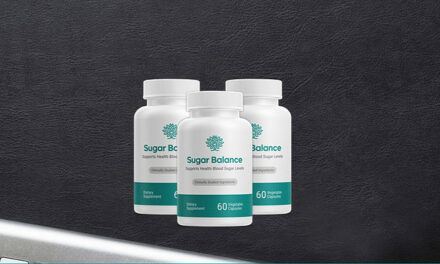Here we look at the relationship between microgreens and diabetes. What are microgreens? How do microgreens affect diabetes? Are Microgreens Good for Diabetics? When are Microgreens Bad for Diabetics? are some of the questions we will be addressing during this journey…
If you are with diabetes, your food choices are extremely important. It is important to include healthy food like microgreens into your diet.
Microgreens are young vegetables that are generally good for people with diabetes. They are nutrient-rich, high in fibre and low in cholesterol.
Microgreens are also high in vitamins, minerals, and antioxidants and are low in calories. Eating microgreens can not only help manage your blood sugar level but may help manage the other causes of diabetes, such as obesity, oxidative stress, cancer, and low HDL. They may also lower the risk of the diabetes complications such as cardiovascular diseases.
For example, instead of consuming a huge volume of vegetables, you can replace them with microgreens which are higher in nutrients. You can add microgreens into your diet by sprinkling them on your food or soup, and adding them to your salads, smoothies and fruit juice.
Although microgreens have a little direct impact on your blood sugar levels, they provide you with nutrients such as magnesium, sulforaphane and plant matter such as polyphenols which can help in managing diabetes.
With that all said, the relationship with microgreens and how they may affect diabetes is not that simple and depends on many factors, which we will look into a little later. First, let’s define what is microgreens before digging into the relationship.
Shall we?
What Are Microgreens?
Microgreens are young and tender seedlings or vegetable plants that fall somewhere between sprouts and baby greens.
They are vegetable plants harvested once the first true leaves have emerged before they mature, usually between 7 to 21 days after they germinate.
Microgreens are sometimes referred to as micro-herbs. They are usually small greens, vegetables or herbs, which are approximately 1–3 inches (2.5–7.5 cm) tall.
These greens have an intense aromatic flavor and dense nutrients.
Microgreens come in different colors and textures. Microgreens are generally considered to have strong flavors, but their taste differs depending on the variety. Their taste can vary from neutral to spicy, or from slightly sour to even bitter.
Microgreens are different from sprouts but more similar to baby greens in that only their stems and leaves are edible.
However, unlike baby greens, microgreens are much smaller in size and can be bought whole and kept until they are ready to be consumed.
Microgreens are very easy to grow, as they can be grown in any environment – indoors, outdoors, in greenhouses and even on your windowsill.
Best to explain this by comparing microgreens with sprouts…
Microgreens vs Sprouts
Many people confuse microgreens with sprouts. Although both are delicious, nutritious and good for your health, the two are quite different.
Microgreens are ready to consume in 7 to 21 days after germination, while sprouts are younger than microgreens, and have a shorter growing cycle as they are ready for consumption within soon as 2–7 days.
Microgreens are about one to three inches in height, including their leaves when they are harvested. Meanwhile, sprouts are less developed, with only seeds and shoots.
Sprouts are planted in water, while microgreens are grown on soil.
Both the stems and leaves of microgreens are eaten, but the sprouts have little or no leaves, so the main edible parts of sprouts are their seeds and stems.
Also, microgreens are tastier, whereas sprouts are crunchier.
They are many types of microgreens…
Different Types of Microgreens
Microgreens can be grown from different types of seeds.
The most popular varieties of microgreens are:
- Brassicaceae family
Cabbage, radish, cauliflower, broccoli, watercress, arugula, red mustard, wasabi, peppercress, purple mustard, purple kohlrabi, mizuna
- Asteraceae family
Lettuce, chicory, endive, and radicchio
- Apiaceae family
Carrot, fennel, dill, cilantro, and celery
- Amaryllidaceae family
- Amaranthaceae family
Amaranth, spinach, beet, quinoa and swiss chard
- Cucurbitaceae family
Cucumber, melon, and squash
- Polygonaceae
Sorrel, red sorrel
- Poaceae
Popcorn shoots
- Cannabaceae
- Lamiaceae
Basil, opal basil, chia
- Fabaceae
Pea tendrils
Other plants that can sometimes be grown into microgreens are:
What are The Benefits of Eating Microgreens?
Microgreens are loaded with nutrients. Aside from adding color and flavor to your dishes, microgreens also enhance the nutritional value of your meal. This is because they are, in most cases, packed with more nutrients than their fully-grown counterparts despite their mini size.
A 2012 study found that microgreens contain 4 to 40 times more nutrients than their fully-grown counterparts.
Below are the benefits of eating microgreens.
1. Rich source of vitamins
Microgreens are loaded with vitamins such as:
- Vitamin K
It helps in blood clotting and maintaining healthy bones and teeth.
- Vitamin C
It helps the body eliminate free radicals and strengthen the immune system.
- Vitamin E
This anti-aging vitamin helps eliminate fine lines and wrinkles and helps protect your body from damage caused by free radicals.
2. Rich in Minerals
Although their nutritional contents may vary slightly depending on the type of microgreens, most varieties tend to be rich in minerals, such as;
- Potassium
This is one of the most important minerals that help the body in many ways, from regulating fluid balance to muscle contractions and nerve signalling.
It can also help lower blood pressure, reduce water retention and prevent kidney stones and osteoporosis.
- Iron
Iron is an essential element that helps the body to produce hemoglobin. Hemoglobin is a component of red blood cells that binds to oxygen, carrying it to your body’s tissues.
Iron prevents anemia, and lowers the risk of developing Alzheimer’s and dementia.
- Zinc
Has an anti-inflammatory effect on the body. It helps to maintain healthy skin.
It is also beneficial for healing acne and scarring caused by acne.
- Magnesium
When it comes to bone and cardiovascular health, magnesium is a very important mineral.
Magnesium is beneficial in the treatment of diabetes, migraines, anxiety, and premenstrual symptoms.
- Copper
This mineral, copper, is an essential nutrient needed in the body. It works with other minerals such as iron to help the body produce more red blood cells. It helps to boost immune function and the absorption of iron.
Copper may also help in preventing cardiovascular disease and osteoporosis.
3. High in Antioxidants
Microgreens are rich in antioxidants such as Carotenoid and Sulforaphane. Microgreens are rich in carotenoids such as:
- Beta Carotene
Beta carotene is converted to vitamin A in the body. It helps to reduce the risk of various diseases such as cancer and the risk of sunburn.
- Lutein and zeaxanthin
According to studies, they support vision by protecting the eyes from macular degeneration and light damage.
- Sulforaphane
This is a compound found in most microgreens, especially those from the Brassicaceae family, which different studies have revealed to:
A. Help stop the growth of the tumor
that causes breast cancer.
B. Regulate the blood sugar level in patients with type 2 diabetes.
C. Have antioxidants and anti-inflammatory properties that support cardiovascular health.
4. Good For Gut Health
Microgreens are high in prebiotic fibre, which can promote the growth of beneficial microbes in your digestive tract, which is good for the gut.
A healthy gut helps to boost immunity, promote healthy elimination, lower the risk of colorectal (bowel) cancers, and improve energy levels and weight maintenance.
What are the Healthiest Microgreens?
There are hundreds of microgreens, and they are healthy as each of them contains a lot of nutrients. However, the type and level of the nutrient in each one varies depending on the microgreen.
Microgreens are considered to be the healthiest depending on the health benefit you aim to obtain from the microgreens and depending on the nutrient – minerals and vitamins you want to get by consuming them.
Some microgreens are considered to be healthier not because others are not healthy, but because they contain a higher level of some vitamins, minerals or beneficial plant matter than the others.
The following are some of the healthiest microgreens
• Arugula microgreens
• Chia microgreen
• Pea shoot
• Amaranth
• Beet
• Broccoli
• Sunflower
• Radish
• Clover
• Kale
• Basil
• Buckwheat
• Mustard
• Alfafa
Which Microgreens Should You Not Eat?
Avoid microgreens from the nightshade family plants, such as tomatoes, peppers, potatoes, and eggplants, because their sprouts can be poisonous. The microgreens from these plants contain high levels of solanine and tropanes, which are forms of toxic alkaloids that can cause gastrointestinal problems or illnesses linked to both the nervous and digestive systems.
Also, solanine in large doses can be deadly.
Other types of microgreens that you may need to avoid or not eat too much of it in a raw state are quinoa, buckwheat and alfalfa. These microgreens, in their raw state, contain fagopyrin and saponins, which are chemical compounds that are slightly toxic and can make you sick when eaten in a large quantity.
Can Diabetics Eat Microgreens?
Aside from being loaded with vitamins, minerals and antioxidants, microgreens are low in calories and low in carbs, which makes it one of the best foods for diabetics.
Eating microgreens is a good way to add colour, and different types of nutrient-rich and high-fibre vegetables to your diet. This can help in diabetes management and promote overall health.
Adding more fibre to your plate by consuming microgreens can also help you to maintain a healthy weight and control your blood sugar level.
Effects of Microgreens on Diabetes
Microgreens are loaded with nutrients that can help in managing diabetes. They are a rich source of dietary polyphenols, which are powerful antioxidants.
Polyphenols, according to a review of studies, can help to lower your blood sugar level and promote insulin sensitivity.
Microgreens are high in phenolics, flavonoids and antioxidants, which have anti-inflammatory and antidiabetic effects and may help to lower the type of stress that prevents sugar from entering cells effectively.
According to a 2017 study published in the International Journal of Food Science & Technology, fenugreek microgreen and mint leave extract appeared to improve glucose uptake in cells by 25–44%.
Microgreens are rich in important minerals such as magnesium. A study on the effect of magnesium on type 2 diabetes has revealed that it can help to improve insulin response and improve glycemic control.
The results of a similar study also suggest that a diet rich in magnesium could have a cardioprotective effect by lowering total blood cholesterol, triglyceride, and oxidative stress.
Microgreens can help to keep you satiated for a long, slow down the rate at which your blood level increases after eating and help you to lose weight as they are low in calories and contain protein, and fiber.
Microgreens contain sulforaphane which, according to a study, can help improve blood glucose levels in type 2 diabetic patients by reducing the production of glucose from hepatic cells and reducing fasting glucose and glycated haemoglobin(HbA1c).
How to Eat Microgreens?
There are different ways to incorporate microgreens into your diet.
You can use microgreens as your vegetables. Also, you can steam, broil or stir-fry microgreens.
In addition, you can also use them to garnish your food by sprinkling them on your dish.
The best and simple ways to consume microgreen is by the following options…
- Smoothies
Pick mild-tasting microgreens, and add in any fruits, vegetables, milk of your choice or water into smoothies with any milk of your choice or water.
Then, blend into smoothies and enjoy!
- Add into juicing
If you like taking fruit or vegetable juice, you can add microgreens to it. Choose the variety of microgreens that complement your juice profile.
- Salads
When it comes to making and enjoying a bowl of salad, we use a lot of different varieties of vegetables.
You can add a few servings of microgreens into your salad depending on the type of veggies and other toppings you are using.
- Cocktail or mocktail
You can also get creative and add microgreens into your cocktail or mocktail
How Much Microgreens Can You Eat?
Microgreens are young vegetables that have not fully matured.
Although they are lower in fibre, they are more nutritious than their matured counterparts. At the same time, they are lower in carbs and calories.
The nutritional content of microgreens differs, so there is no standard measure of how much microgreens you can eat.
But, the U S Dietary Guidelines for Americans guideline recommends that adults on a 2000-calorie diet should eat about 2½ cups of vegetables per day. You can adjust the quantity of vegetables according to your caloric intake.
Since microgreens are veggies, this means one can consume the same amount of microgreens as their fully-grown counterparts.
Cautions
Microgreens are generally considered to be safe to consume, and they can be easily grown at home. But, because there is a concern about the risk of getting sick as a result of allergic reactions to a type of microgreen or food poisoning, you need to take some caution.
You need to be cautious of how you prepare, store and grow your microgreens.
Since we have a lot of microgreens out there, you also need to know which to eat and which to stay away from to avoid getting sick.
1. Cautions to take when preparing and storing microgreens
Microgreens are best eaten raw to retain their vitality and nutritious values. But, because of the risk of getting sick, it is advised that you take some precautions such as:
- Wash your microgreens thoroughly before consuming either raw or cooked to reduce the risk of food poisoning.
- Cook microgreens to ensure that they are safe to consume, as cooking might kill germs and bacteria, and reduces the risk of illness that may result from eating raw microgreens.
- Discard and do not eat microgreens that have developed mold or fungus, as they can make you sick by causing food poisoning.
- Avoid eating the roots of microgreens as molds are more likely to grow on the roots of the plant.
- Store microgreens for only a few days by covering and keeping them in a refrigerator. Discard them once the leaves have shriveled, and the stems become mushy and smelly as they are no longer fit for consumption.
- Do not eat microgreens if you are allergic to their fully grown counterpart or if you noticed that you developed an allergic reaction to them.
- Avoid microgreens from the nightshade family and do not eat a lot of microgreens like Quinoa, Alfalfa and Buckwheat in a raw state as they can make you sick.
- People with weaker immune systems, such as pregnant women, children and the elderly, should not eat raw microgreens as they are more prone to infections, and their immune systems might not be able to fight off bacteria or viruses.
2. Caution to take when growing microgreens at home
If you plan to grow your microgreens at home, it is advised that you take the following cautions;
- Purchase seeds from a reputable company to ensure that the seeds are of high quality and safe to be consumed.
If you use microgreen seeds that are of poor quality, the growth of the plants can be stunted, and the risk of growing mold and fungus is increased.
- Sanitize the microgreens seeds by soaking the seed in 1 teaspoon of food-grade hydrogen peroxide for an hour, then rinse several times with clean water before planting.
This will increase the safety of the microgreen seeds you intend to plant. As it helps reduce the risk of seeds growing fungus or mold.
Summary
Microgreens are rich in nutrients, and adding them to your diet is a good way to increase your intake of vitamins, minerals and beneficial plant compounds such as antioxidants which help to fight oxidative stress and lower the risk of some chronic diseases such as diabetes, heart diseases, Alzheimer’s disease, and cancer.



















